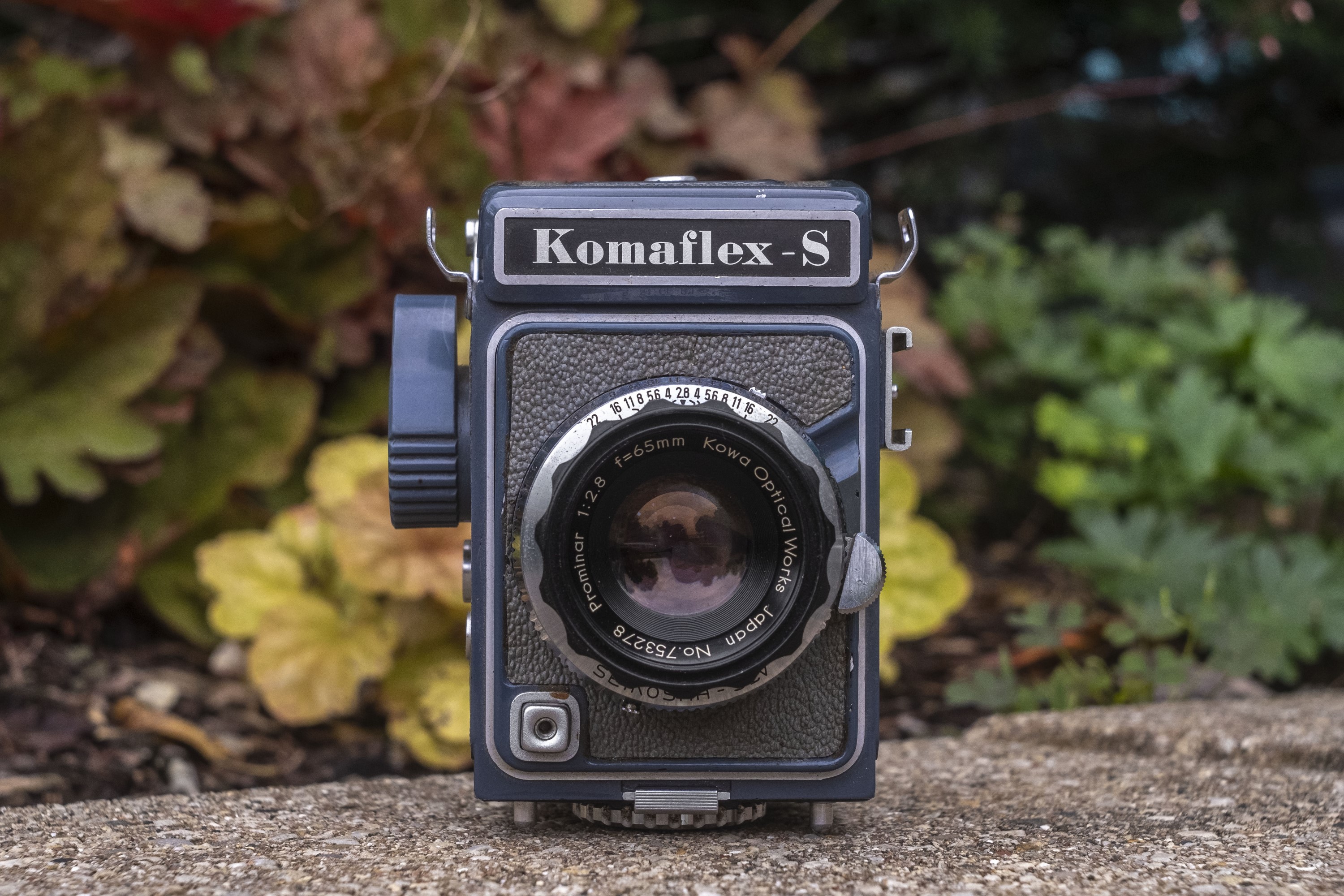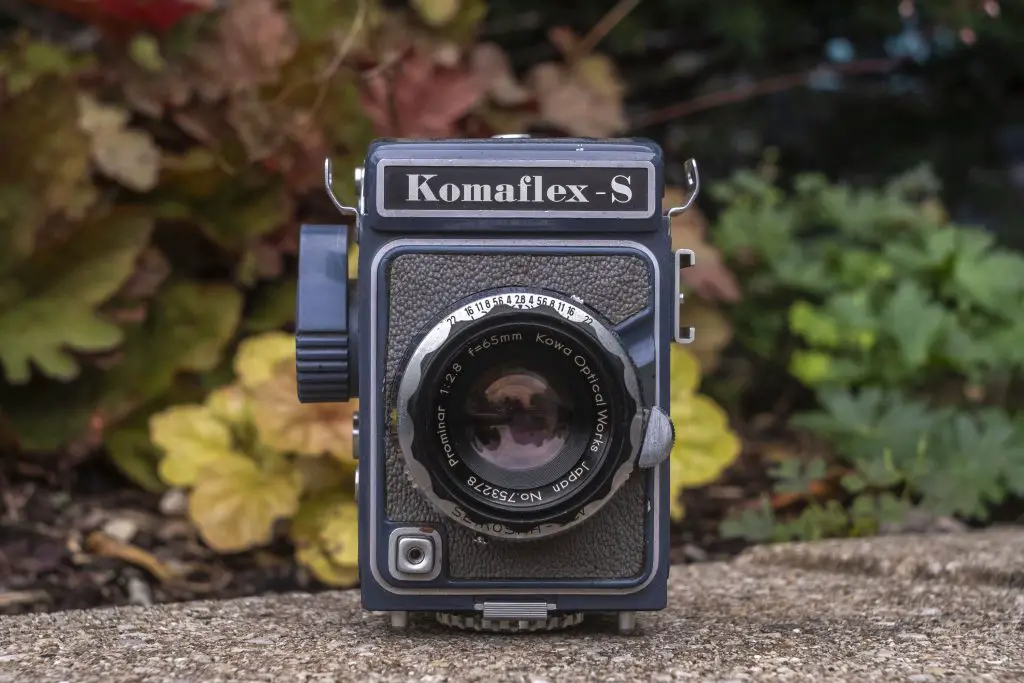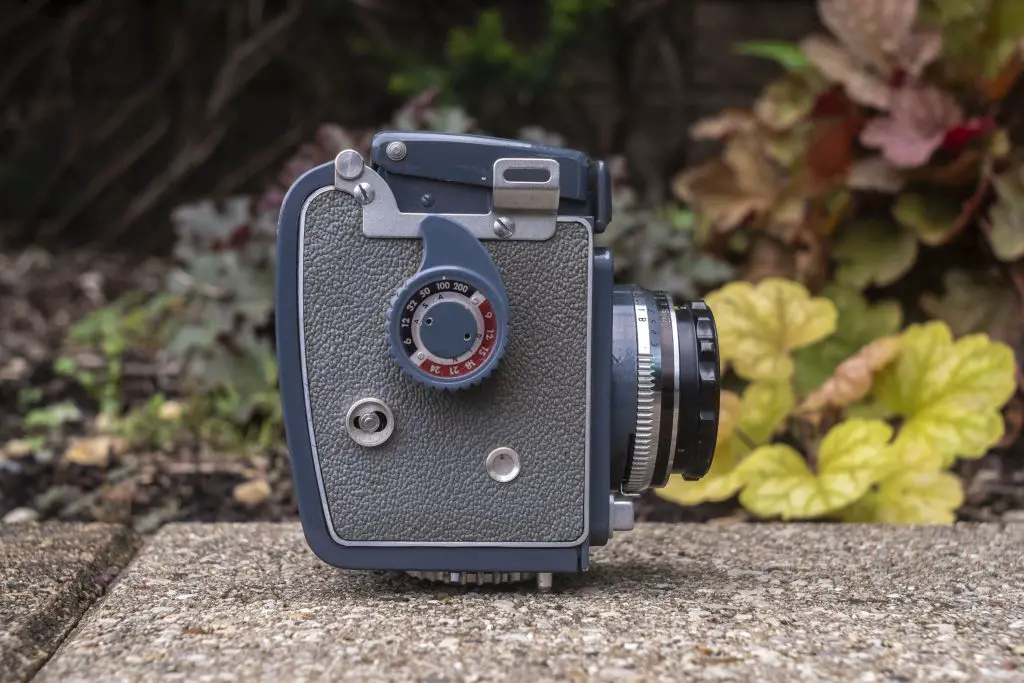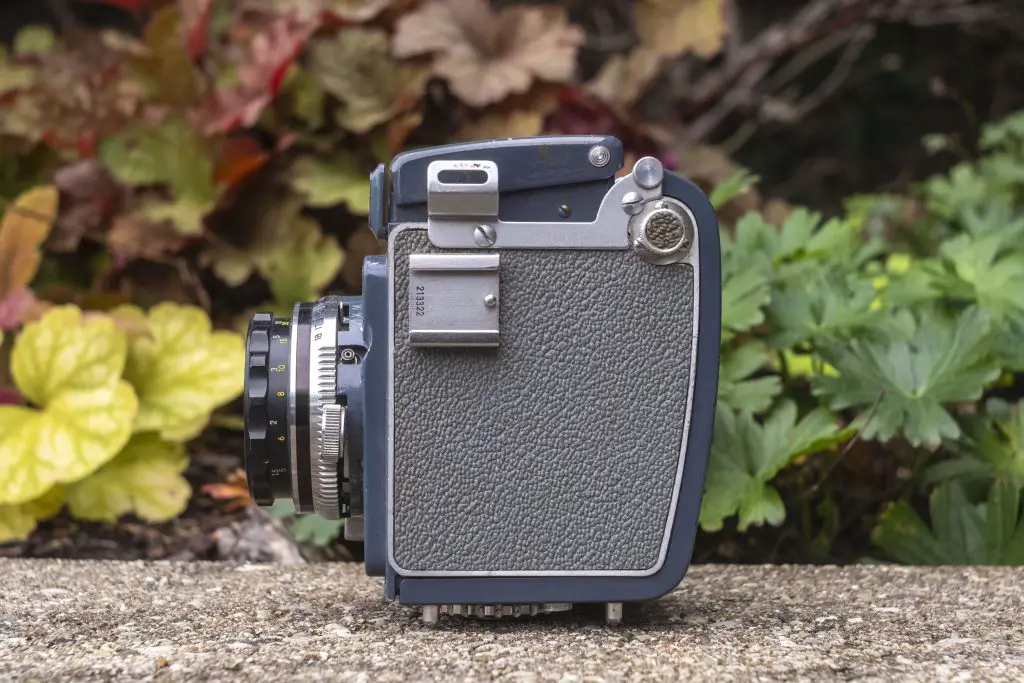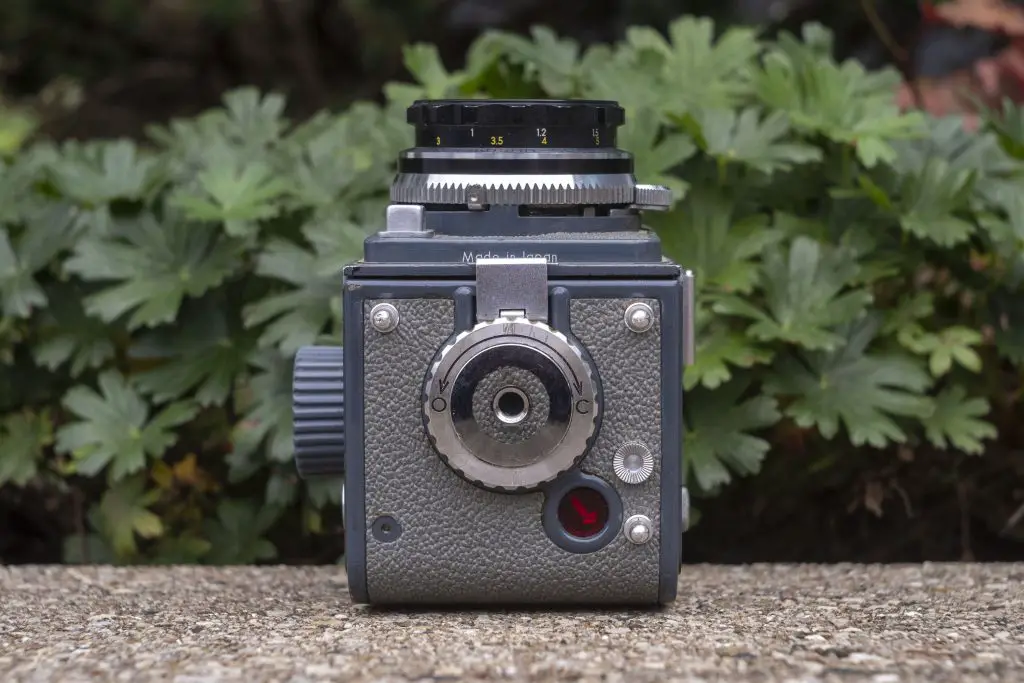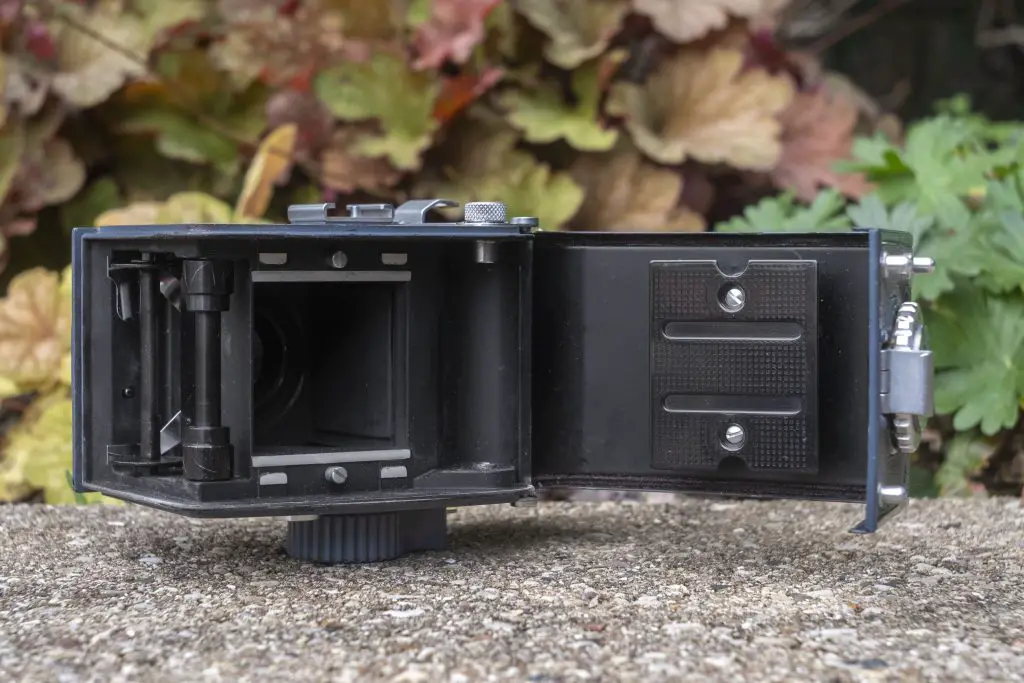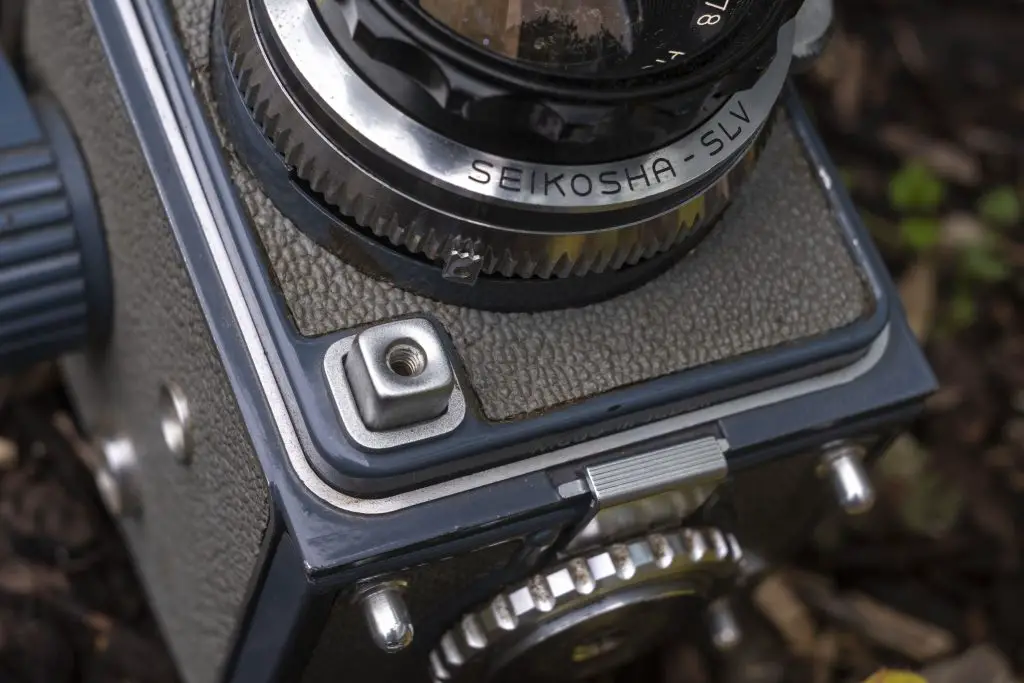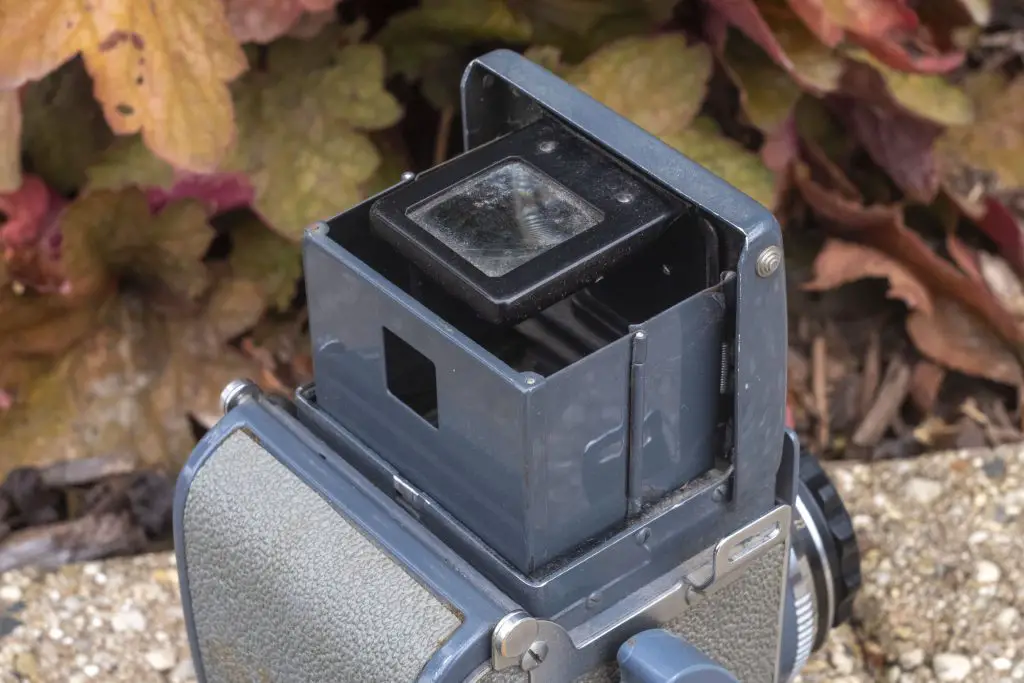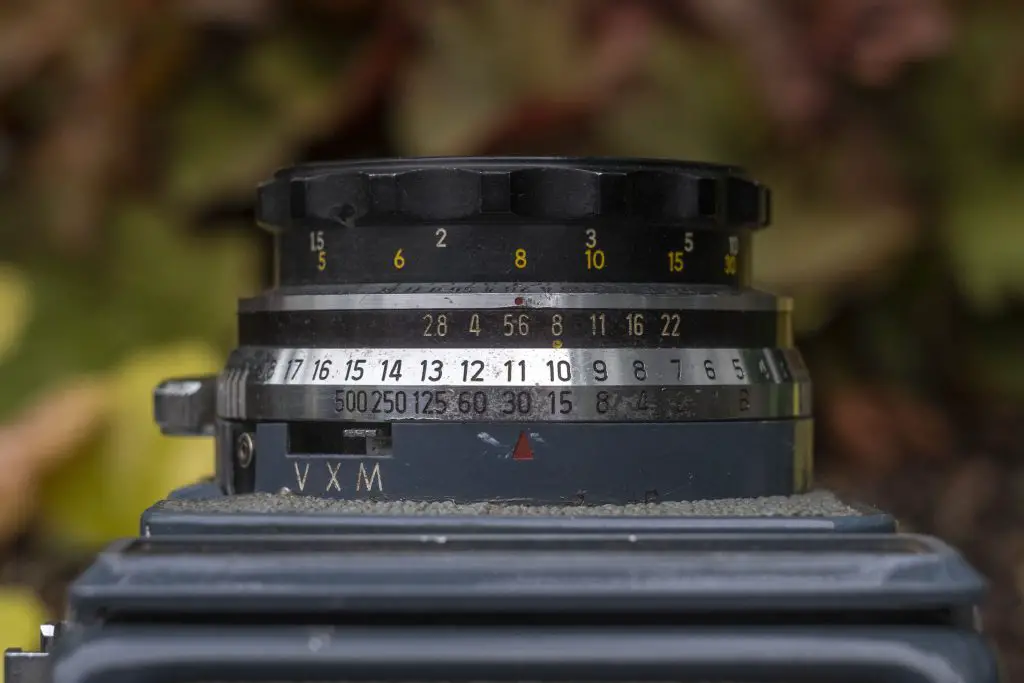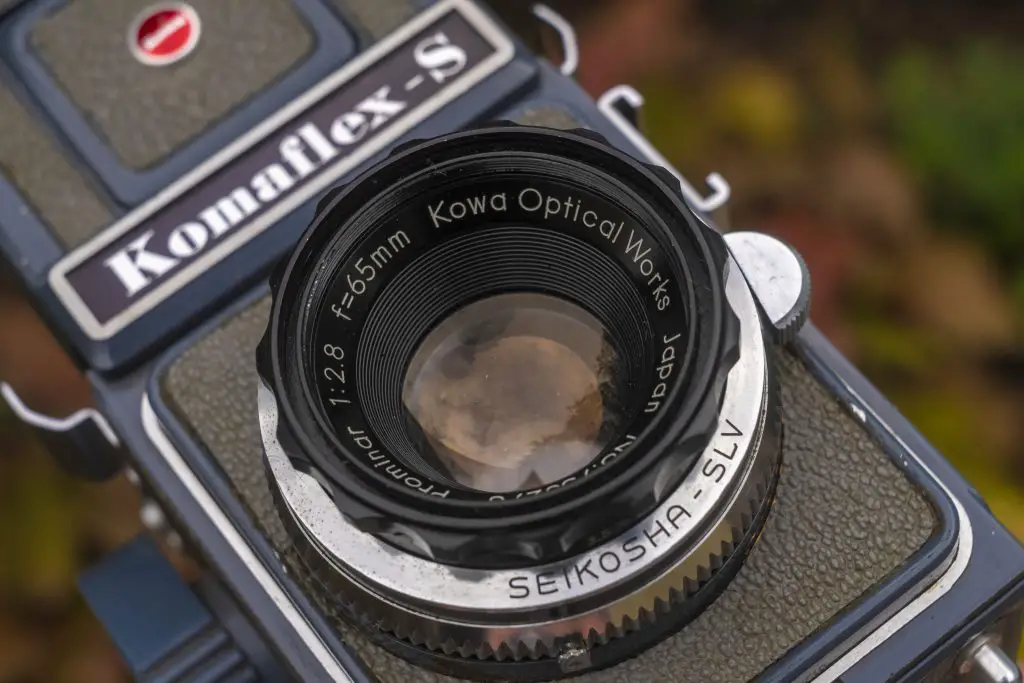 This review is part of the Cameras of the Dead series which I have been publishing every year on Halloween and “Halfway to” Halloween, featuring three cameras that I’ve wanted to review that either didn’t work, or was otherwise unable to shoot.
This review is part of the Cameras of the Dead series which I have been publishing every year on Halloween and “Halfway to” Halloween, featuring three cameras that I’ve wanted to review that either didn’t work, or was otherwise unable to shoot.
I am republishing each of those individual reviews this October in anticipation of this Halloween’s Cameras of the Dead post as a way to revisit the cameras of the past that allows them to be properly indexed on the site.
This is a Komaflex-S, a compact Single Lens Reflex camera that shoots 4cm x 4cm images on 127 format roll film. The Komaflex-S was built in Japan by Kowa Optical Works starting in 1960 for export only. The use of the name Komaflex is strange considering Kowa already had a Kowaflex 35mm SLR being sold in the US, so the name change is curious. The camera was an inexpensive but capable design with a fixed Prominar lens that combined with a reflex viewfinder, offered full through the lens composition like any normal SLR. Although generally well built, the camera had an unorthodox film transport which was prone to failure and many of these cameras are found today in inoperable condition.
Film Type: 127 Roll Film (Twelve 4cm x 4cm images per roll)
Lens: 65mm f/2.8 Kowa Prominar Coated 4-elements
Focus: 3 feet to Infinity
Viewfinder: Waist Level Coupled Reflex Viewfinder
Shutter: Seikosha-SLV Leaf
Speeds: B, 1 – 1/500 seconds
Exposure Meter: None
Battery: None
Flash Mount: Accessory Shoe with PC Port M and X sync
Weight: 710 grams
Manual: https://www.butkus.org/chinon/komaflex-s/komaflex-s.pdf
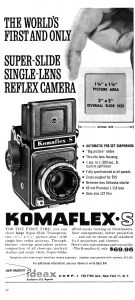
My Thoughts
Of the three cameras in this article, the one that I had hoped would work the most was this Komaflex-S. I am a huge fan of Kowa’s 35mm SLRs and in my review of the SET-R, I confidently put it up in terms of usability and image quality to the best of any other camera maker’s models. I also love 127 format TLRs like the Yashica 44 for it’s more compact size, yet large waist level viewfinder and excellent image quality.
I had heard that these Komaflexes aren’t well known for reliability, but I thought maybe I’d get lucky. Nope.
Before I talk about the camera, perhaps I should start with the name. Why is this thing called the Komaflex (with an ‘m’) instead of Kowaflex, like the company’s other Kowaflex cameras? An oft repeated story goes that the camera was designed for export only and upon registering the name “Kowaflex” with the US trademark office, the name was accidentally misspelled as Komaflex, and rather than re-apply to get it corrected, the name stuck. I supposed it could be as simple as that, but it just seems odd that such a simple mistake would make it all the way to production like that. Imagine if Kawasaki or Panasonic had become Kamasaki or Panasomic?
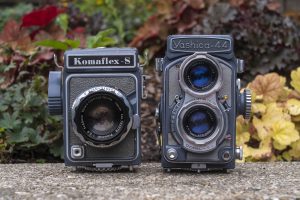
Whatever it should have been called, the Komaflex is shorter but every so slightly wider and deeper than a Yashica 44 which itself is nearly the same size as a Baby Rollei. The camera is still not very pocketable however due to it’s depth and large knob sticking out of the side of the body.
When it was sold, it was billed as the world’s first and only Super-Slide Single Reflex Camera, which was a bit of marketing trickery as other cameras existed prior to it which shot 4cm x 4cm slides, but a combination that they weren’t exported to the United States and the fact that no one used the term “Super-Slide” when they were made, is how US importers could get away with such a claim.
The camera sold new in 1960 for $69.95 which when adjusted for inflation, compares to about $615 today, which was a relative bargain compared to larger 6cm x 6cm medium format SLR cameras.
Most Komaflexes came with an off-blue painted body and gray leatherette, but a few were painted black. Looking down upon the camera from the top, it looks very much like any twin lens reflex with a stylish circular red Kowa logo on top. It seemed that red circle logos were quite popular as Kodak, Bolsey, Petri, and Leitz all used them as well.
The lid flips up to reveal a pretty normal looking waist level finder, with flip down magnifying glass for precision focus, and an opening on the inside the lid to be used as a sports finder for quick action shots.
The camera’s left side features only the accessory shoe, but the right side is where you’ll find the film advance knob/lever, exposure counter, and a sliding release for the shutter cocking lever. Both sides of the camera have metal loops for attaching a camera strap, which was probably a good idea as the camera’s 710 gram weight would have required some type of stabilization while walking around with it.
Loading film into the camera requires first opening the back, which is done by rotating the large ring around the tripod socket counterclockwise, which pushes a metal finger forward near the bottom of the shutter. The rear of the camera is hinged at the top, which is a bit awkward for loading film as there’s no easy way to set the camera down without the door wanting to keep slamming shut on you.
The film compartment looks like most TLRs in that a new roll of film loads on a spool on the bottom of the camera, then makes a 90 degree turn past the film plane and onto the take up spool.
The process of loading film into the Komaflex-S reveals one of the camera’s biggest weaknesses and perhaps the reason it is so often found in non-working condition. Since mine wasn’t working, I wasn’t unable to do the process myself, but reading the instructions in the user manual suggests quite a few additional steps. It seems you cannot cock the shutter without the exposure counter being at 1, and you need to keep using the sliding lock next to the exposure counter to allow you to cock the shutter. I also found it concerning how often the user manual repeatedly warns you against using too much force while operating the camera which suggests that the designers were aware of the fragile nature of the design.
The Komaflex-S was intended to be a cost effective SLR for those who wanted something larger than 35mm but didn’t want to spend the money on cameras made by Hasselblad or Mamiya. One cost cutting measure was the use of a fixed lens. The fixed 65mm lens was not removable, but when it was new, Kowa made two screw on auxiliary lenses for semi-wide and semi-telephoto shots. Being a through the lens reflex camera meant that when using these accessories, the photographer could see the changes in the viewfinder as it if was a true interchangeable lens camera.
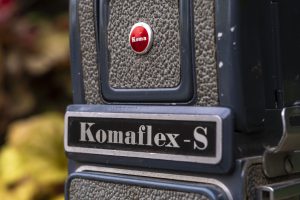
The Seikosha leaf shutter operated like any other leaf shutter with shutter speeds and aperture settings controlled by rings around the lens. There was also a switch for M and X flash sync and a V setting for a self timer.
The Komaflex-S seemed like a pretty capable camera that possibly was released at the wrong time as the need for a medium format SLR using 127 film was probably quite small. The price point of under $70 likely meant that some cost cutting measures went into the camera’s design, which caused reliability problems. Kowa would go on to make some other good cameras, just none like this.
I am unsure of how long the camera was in production, but it probably wasn’t very long as the best estimate of how many were built is right around 11,000. Like I said earlier, I had wished this camera would have worked, even a little, but it didn’t, and as a result, here it belongs as a Camera of the Dead.
(Not) My Results
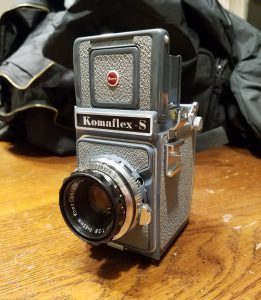
Keeping with the theme in this 8th edition of showing examples from these dead cameras, this time I had to branch out and find what could possibly be the only working Komaflex-S out there. While writing this article, I reached out a large number of collectors I know asking if anyone had a working example and of the people who had one (or many) in their collection, they were all inoperable, except one.
That one camera belongs to Jon Gilchrist of the Packard-Ideal Shutter Company who is also an avid film shooter. Jon had been wanting to take his Komaflex-S out and do a comparison between it and something comparable. He chose a Sawyer’s Mark IV TLR that also used 127 film, and a Yashica-124 TLR that used 120 film to see how a larger negative might compare. For the two 127 cameras, he used slightly expired Kodak Portra 160 and Ilford HP5+ that he cut down to 127 size and in the Yashica-124, regular 120.
Rather than ramble on about what he told me, here is an actual quote describing his take on the camera.
I like the Komaflex-S a lot. The viewfinder is bright and focusing is fairly easy. It feels rough and fragile, but I’ve been advancing the film very carefully and have learned to advance and cock the shutter right before I take a picture so I don’t accidentally hit the shutter button. Looking at the images under magnification, the Komaflex is sharper than the Sawyer’s or the Yashica. I’m going to say that for shooting 127, it’s a toss-up between the Komaflex and the Sawyers for which is my favorite. They’re both ahead of the Yashica 44, but the 44 is much easier to use with 35mm.
Here are some sample images that Jon shot with his camera and gave me permission to publish here. As always, click on each gallery image for the full size version.
Related Posts You Might Enjoy
External Links
http://camera-wiki.org/wiki/Komaflex-S
https://www.beauphoto.com/camera-speed-dating-kowa-komaflex-s-127-slr/
http://www.elekm.net/pages/cameras/komaflex-s.htm
http://rick_oleson.tripod.com/index-169.html
http://photographytoday.net/forums/viewtopic.php?style=2&f=24&t=49
https://www.collection-appareils.fr/x/html/camera-15316-Kowa_Komaflex%20S.html

